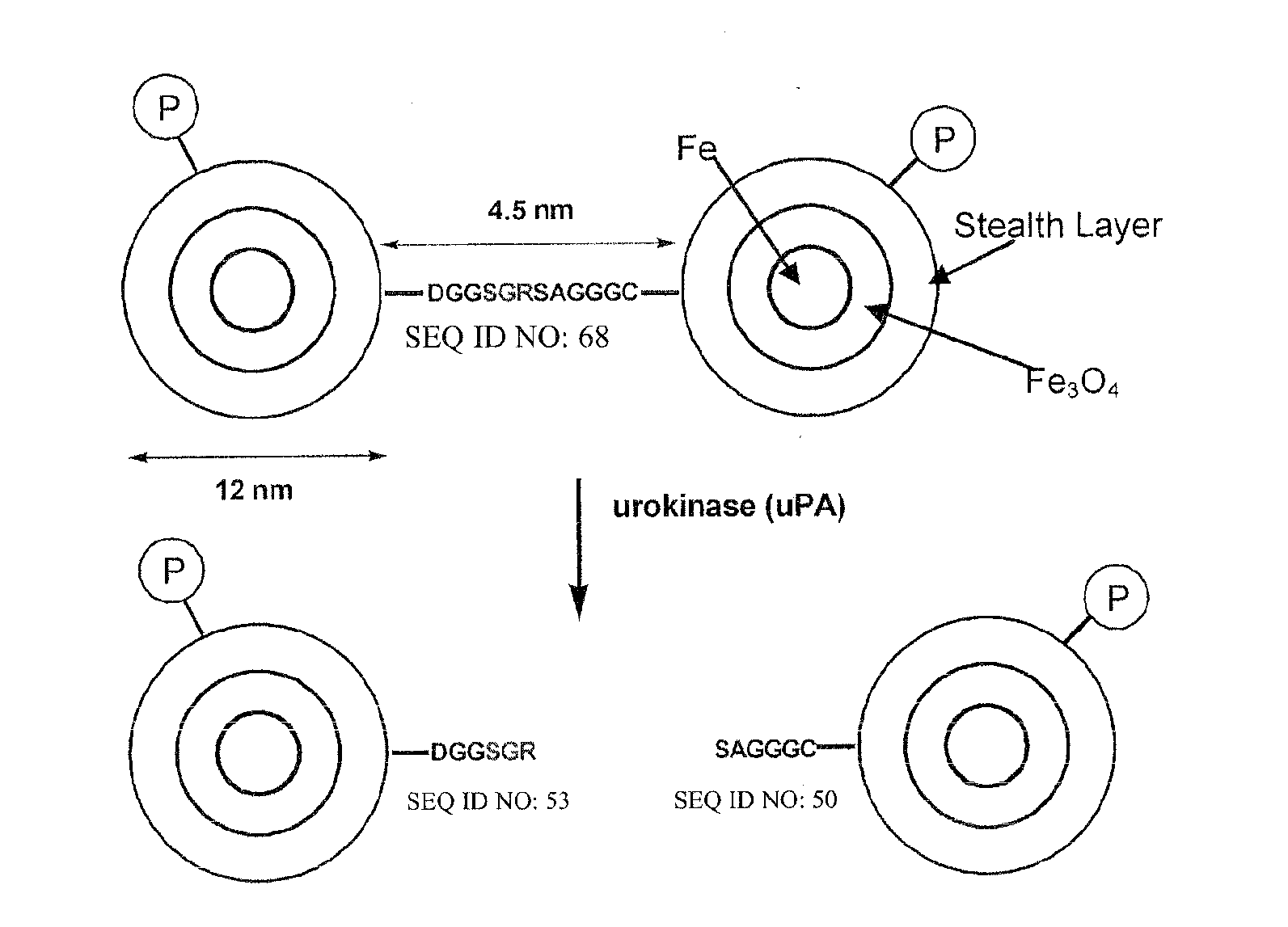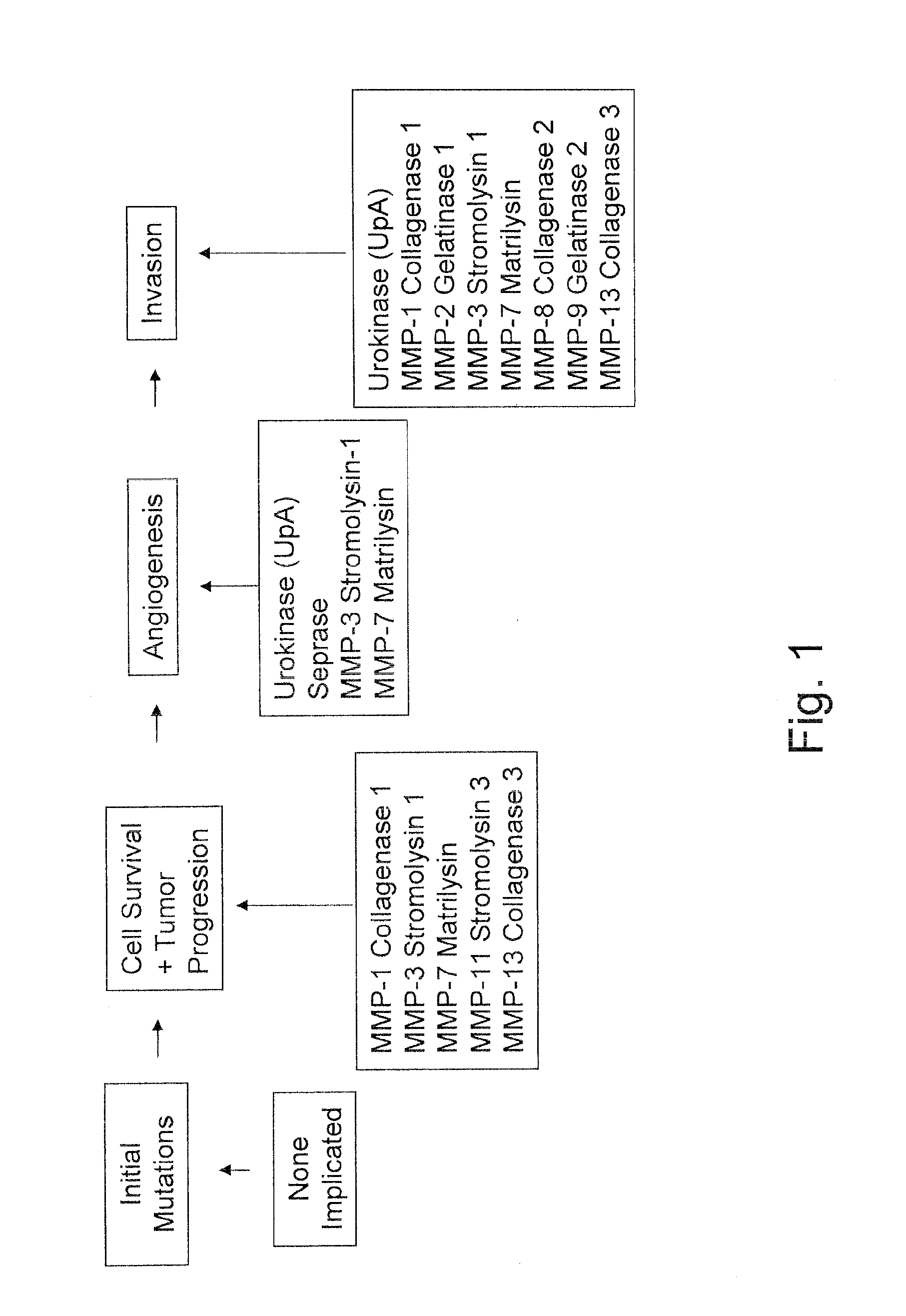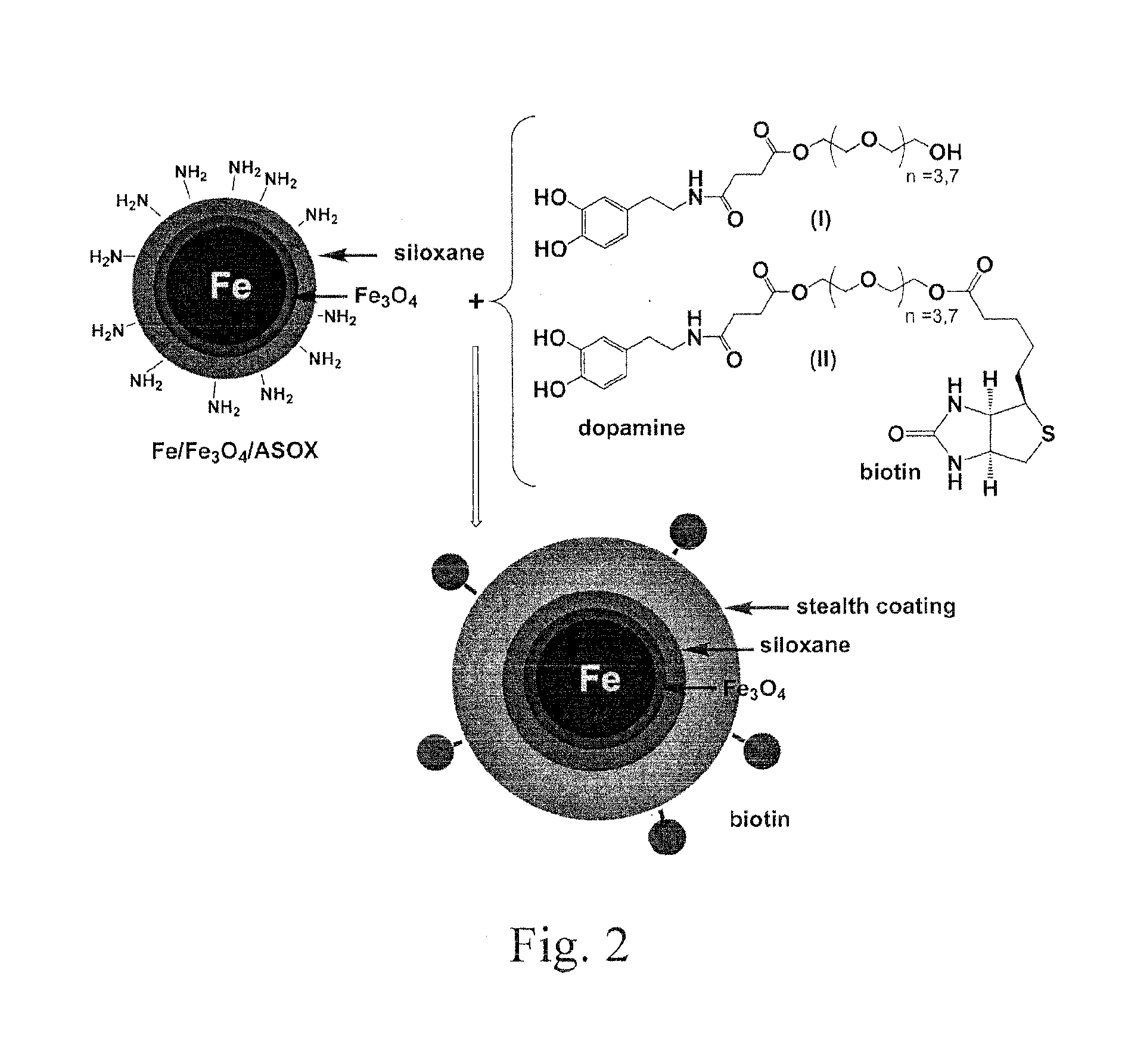MRI and optical assays for proteases
a protease and optical assay technology, applied in the field of multifunctional nanoplatforms, can solve the problems of ecm degradation, rapid loss of coherence, loss of transverse magnetization and mri signal,
- Summary
- Abstract
- Description
- Claims
- Application Information
AI Technical Summary
Benefits of technology
Problems solved by technology
Method used
Image
Examples
example 1
Synthesis of Organic Stealth Ligands
[0176]In this Example, three different ligands for the stealth coating of the nanoparticles are synthesized. Analysis of each reaction product was done by proton NMR (1H NMR) and / or carbon-13 NMR (13C NMR), employing a 400 MHz NMR spectrometer (Varian; Kans. State University), and by Electrospray Ionization Mass Spectrometry (MS-ESI), employing a hybrid triple quadrupole / linear ion trap mass spectrometer (4000 Q-TRAP®, Applied Biosystems; Foster City, Calif.) with an electrospray source.
A. Ligand A Synthesis
[0177]1. Boc-Protection of Dopamine
[0178]A solution of dopamine (310 mg, 1.63 mmol) in methanol (8 ml) was prepared and stirred under N2 for 5 minutes. 1.8 mmol triethylamine (TEA) was added to the solution followed by Boc-anhydride (393 mg, 1.8 mmol) The mixture was stirred under N2 for 12 hours. The solvent was then removed under reduced pressure. The remaining residue was dissolved in 40 ml of CH2Cl2 and washed three times with 5 ml of each ...
example 2
Synthesis of Non-Metalated Porphyrin
[0204]
[0205]In this Example, a non-metalated tetracarboxyphenyl porphyrin (TCPP) was synthesized. First, 1.50 grams of 4-carboxybenzaldehyde were dissolved in 80 ml of acetic acid. The solution was warmed to 100° C., followed by the dropwise addition of a solution of 0.67 grams of pyrrole in 10 ml of acetic acid over a period of 20 minutes. Upon completion of the addition, the resulting solution was warmed up to 130° C. slowly and kept at 130′C for 1 hour. The mixture was then cooled to 80° C. Next, 100 ml of 95% ethanol were added and the temperature was lowered to room temperature while stirring for 3 hours. The mixture was then stored at −15° C. for 24 hours. A purple solid was collected by vacuum filtration. The filter cake was then washed three times with 5 ml of cold 50 / 50 ethanol / acetic acid, and dried under high vacuum (oil pump) overnight. 0.51 grams of pure product were obtained. Total Yield 25.5%.
[0206]1H NMR (400 MHz, DMSO-d6) δ: −2.94...
example 3
Alternative Synthesis Method for Ligand A
[0207]The synthesis starts with the benzyl-protected dopamine, which reacts first with succinic anhydride and then with dicyclohexyl-carbodiimide (DCC) and N-hydroxy-benzotriazole (HOBT) to selectively form a HOBT-active ester (I). This active ester reacts with commercially available tetraethylene glycol or octaethylene glycol to compound (II), which is then deprotected with H2 / Pd(C) in tetrahydrofuran (THF), resulting in compound (III). This reaction scheme is shown in FIG. 6.
[0208]Purification of all stages can be achieved by descending column chromatography using neutral silica as stationary phase and n-hexane / ethyl acetate as eluent. According to molecular modeling the octaethylene glycol ligand has a length of 3.7 nm, whereas the tetraethylene glycol ligand is 2.5 nm in length.
[0209]The porphyrin can be attached to the ligand prior to stabilization of the nanoparticle. In this embodiment, compound II can be reacted with metalated (M=Zn2+...
PUM
| Property | Measurement | Unit |
|---|---|---|
| Temperature | aaaaa | aaaaa |
| Specific surface area | aaaaa | aaaaa |
| Temperature | aaaaa | aaaaa |
Abstract
Description
Claims
Application Information
 Login to View More
Login to View More - R&D
- Intellectual Property
- Life Sciences
- Materials
- Tech Scout
- Unparalleled Data Quality
- Higher Quality Content
- 60% Fewer Hallucinations
Browse by: Latest US Patents, China's latest patents, Technical Efficacy Thesaurus, Application Domain, Technology Topic, Popular Technical Reports.
© 2025 PatSnap. All rights reserved.Legal|Privacy policy|Modern Slavery Act Transparency Statement|Sitemap|About US| Contact US: help@patsnap.com



